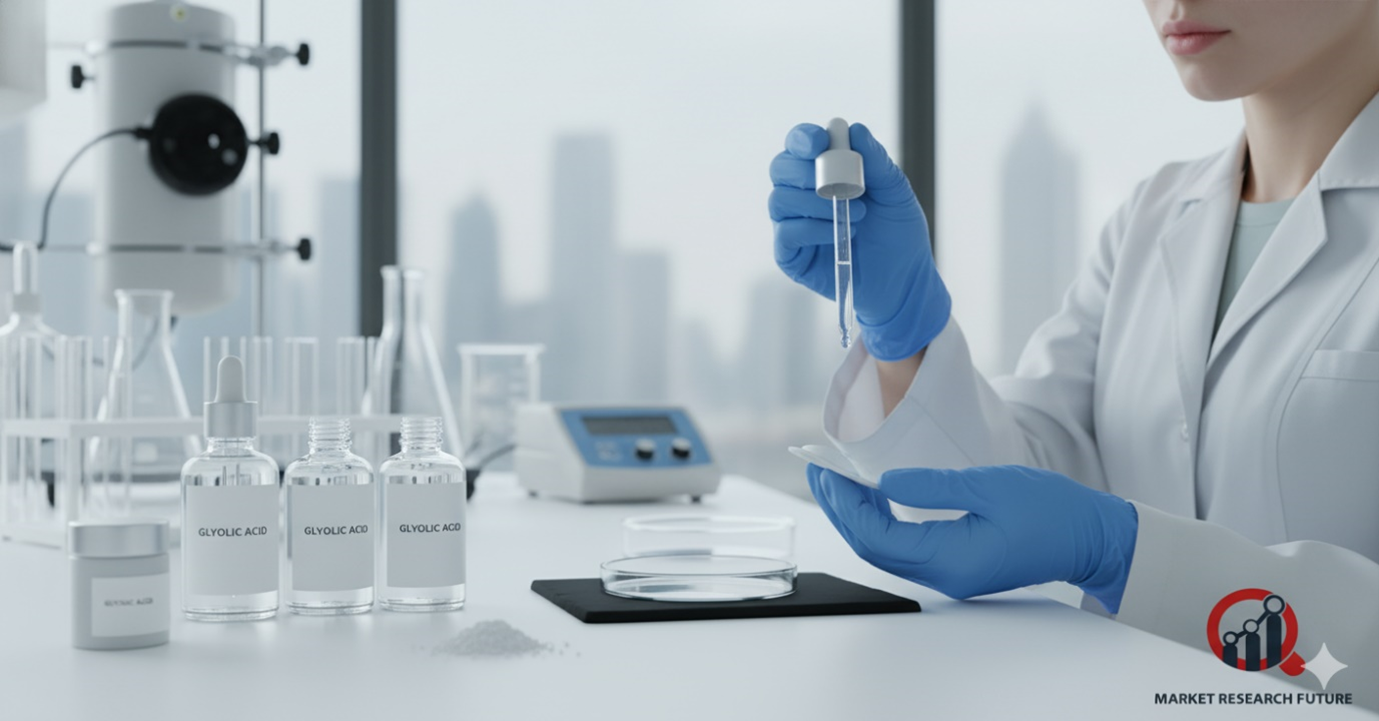Glycolic acid: What's Holding the Market Back?

Glycolic Acid Market: Challenges and Barriers to Growth
Glycolic acid is one of the most popular chemical exfoliants for skin in the market. It helps in the treatment of mature, sun-damaged skin and acne. Unlike most exfoliants that remove the dead skin, glycolic acid works by breaking down the ‘glue’ that holds the skin cells together. It also triggers the skin cells' rejuvenation. It is also used in home remedies for scalp problems like dandruff and seborrheic dermatitis.
Applications and Usage
Glycolic acid can be found in OTC products in concentrations of 5% to 50%. Even stronger concentrations can be prescribed by dermatologists. For acne-prone skin, higher concentrations are often more effective. Usually, it is used once or twice daily for 4–6 weeks, after which it is reduced to maintenance levels. Different regulatory bodies, for example, the U.S. FDA and Health Canada, approve glycolic acid for acne and photo-aged skin treatment. High-concentration glycolic acid products are also used only for topical application.
Glycolic acid is used for:
Mild to moderate acne: Unblocking pores, removing dead skin, preventing new lesions, and accelerating healing.
- Photoaged skin: Fine wrinkles, hyperpigmentation, and sun-induced aging.
- Skin texture improvement: Dry, sensitized, or damaged skin with pore appearance.
Clinical Evidence
In 2004, the University of Minnesota Medical School conducted a notable double-blind research study that revealed the benefits of 0.6% glycolic acid chemical peels administered 3 times a week. For decades, chemical peels have been considered the gold standard for skin rejuvenation. Unfortunately, the time and costs associated with professional peels have caused many customers to look for at-home glycolic acid peels to treat acne, fine lines, wrinkles, and dark pigmentation.
Market Challenges
The increasingly high demand for glycolic-acid products has created a disruption in the supply chain. In an effort to keep up with demand, some suppliers have turned to unethical, cheap methods that compromise the consistency of the products and may even endanger consumer safety. When used as directed, glycolic acid is generally safe. When people misuse it, for instance, in DIY tanners or other home chemistry experiments, it can be severely unsafe.
Future Outlook
Suppliers and brands that maintain a steady supply of high-quality glycolic-acid products will position themselves well as the U.S and world markets continue to grow. Research is needed outside the realm of marketing that looks at real-life effectiveness to help build consumer trust and ensure the sustainable growth of the glycolic-acid market.

Leave a Comment